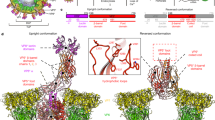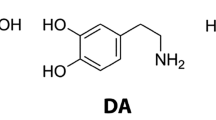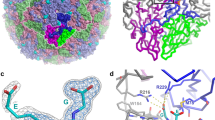Abstract
LIKE other viruses, poliomyelitis virus undergoes inactivation in the presence of nitrous acid1,2. Since the inactivation of whole poliovirus is accompanied by the induction of mutations2, the process must involve the virus's genetic material (ribonucleic acid, RNA); it is not known, however, whether all the inactivating events are at the RNA-level, or whether some of them result from the reaction of nitrous acid with the viral protein (protein inactivation). As indicated in this communication, some results from several lines of investigations support the latter hypothesis.
This is a preview of subscription content, access via your institution
Access options
Subscribe to this journal
Receive 51 print issues and online access
$199.00 per year
only $3.90 per issue
Buy this article
- Purchase on Springer Link
- Instant access to full article PDF
Prices may be subject to local taxes which are calculated during checkout
Similar content being viewed by others
References
Schäfer, W., Zimmermann, T., and Schuster, H., Z. Naturforsch., 14b, 632 (1959).
Boeyé, A., Virology, 9, 691 (1959).
De Somer, P., Prinzie, A., De Maeyer, E., and Lamy, M., Bull. World Health Org., 22, 295 (1960).
Schramm, G., in “Les nucléoprotéines”, Eleventh Conseil de ehimie Solvay, 299 (Interscience Publishers, New York, 1959).
Author information
Authors and Affiliations
Rights and permissions
About this article
Cite this article
BOEYÉ, A. Inactivation of Protein in Poliovirus by Nitrous Acid. Nature 193, 601–602 (1962). https://doi.org/10.1038/193601a0
Issue Date:
DOI: https://doi.org/10.1038/193601a0
This article is cited by
-
Vergleichende Untersuchungen �ber die Wirkung der salpetrigen S�ure auf die antigene und die physikalische Struktur von Poliovirus-Teilchen
Archiv f�r die gesamte Virusforschung (1965)
-
Influence of nitrous acid on32P-poliovirus
Archiv f�r die gesamte Virusforschung (1965)
Comments
By submitting a comment you agree to abide by our Terms and Community Guidelines. If you find something abusive or that does not comply with our terms or guidelines please flag it as inappropriate.



